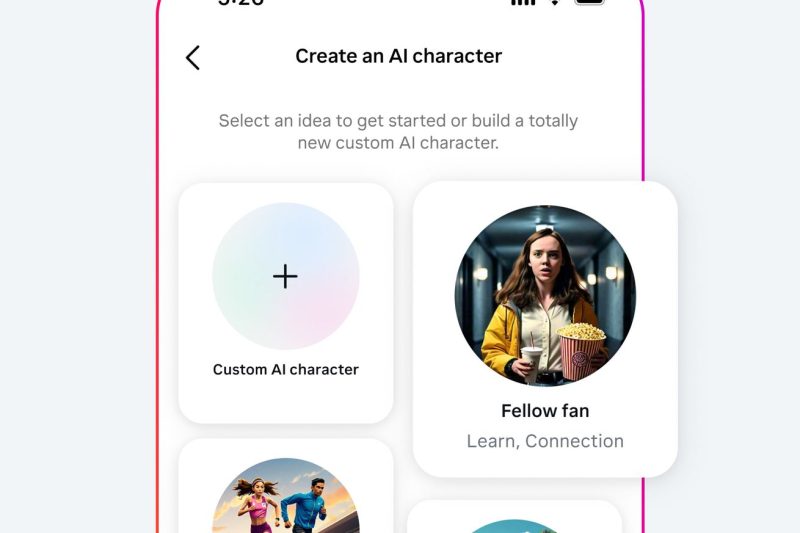Instagram Starts Letting People Create AI Versions of Themselves
Instagram, one of the world’s most popular social media platforms, is always at the cutting edge of technological innovation. In their latest move, Instagram has introduced a feature that allows users to create AI versions of themselves. This new feature has sparked both excitement and concern among users and experts alike.
The process of creating an AI version of oneself on Instagram is simple yet fascinating. Users are required to take a short selfie video, which is then used by the platform’s advanced AI algorithms to generate a lifelike animated avatar. This avatar mimics the user’s facial expressions, mannerisms, and even voice, creating a highly personalized virtual representation.
On one hand, this feature offers users a fun and creative way to express themselves online. The ability to interact with friends and followers using a personalized AI avatar adds a new dimension to social media interactions. Users can engage in conversations, share updates, and react to posts using their AI doppelganger, enhancing the overall user experience on the platform.
Moreover, the AI avatar feature opens up new possibilities for content creation. Influencers and content creators can leverage this technology to produce engaging and entertaining videos, leveraging their AI avatar to connect with their audience in a unique and memorable way. This can lead to increased engagement, follower growth, and potentially new monetization opportunities for social media influencers.
However, the introduction of AI avatars on Instagram also raises important questions regarding privacy and security. Since the creation of an AI avatar requires users to provide a video of themselves, concerns about data protection and potential misuse of personal information have been raised. Users need to be aware of the implications of sharing such data with the platform and should consider the risks before participating in this feature.
Additionally, there are concerns about the potential misuse of AI avatars for malicious purposes, such as deepfake videos or scams. As the technology advances, there is a need for robust safeguards and monitoring mechanisms to prevent the unauthorized use of AI avatars and protect users from potential harm.
In conclusion, Instagram’s introduction of AI avatars represents an exciting development in the world of social media. The feature offers users a fun and engaging way to express themselves online and opens up new opportunities for content creators. However, users should be mindful of privacy and security implications and exercise caution when sharing personal data online. By balancing innovation with responsible usage, Instagram can continue to push the boundaries of technology while ensuring the safety and well-being of its users.

